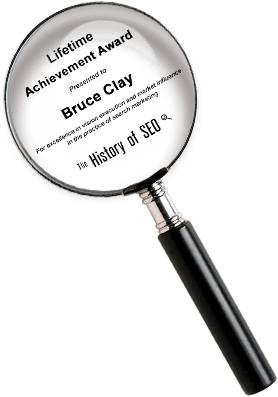How do I ensure clients follow through on our SEO recommendations?

- Overview
- What I Think
- Deep Dive: Building Client Accountability for SEO Implementation
- 24-Step Action Plan
- Quick Solutions
- About Us
Overview
Here’s a scenario we’re all too familiar with: You hand off a solid SEO strategy, complete with actionable insights and prioritized fixes, only to watch it stall in the hands of the client. Maybe it’s resource constraints. It could be a lack of internal buy-in, or maybe it’s just the pace of their business. Whatever the case, your expertise isn’t fully realized if the work never gets implemented.
We’ve learned that SEO is not a once and done, set it and forget it discipline. SEO is a strategic partnership, and getting clients to follow through requires a lot more than technical brilliance. It calls for open dialogue, education and clear alignment with business goals.
So, here’s some actionable advice to help you get your clients to understand the “why” behind your recommendations, take ownership of the roadmap and build accountability into the process so that your efforts actually see the light of day.
What I Think
SEO projects often stall when there’s no clear transition between teams and clients. If no one knows exactly what’s expected—or when—momentum fizzles out fast. Some expectations should be firm so we all know what we’re aiming for. Others need room to flex so progress isn’t blocked by unnecessary red tape.
Too often, SEO audits get treated like checklists — done once, then forgotten. That approach misses the real value. My experience has taught me it works best when audits become ongoing conversations with clients. By sitting together and creating a roadmap together, it not only becomes smarter and more rewarding; clients become active partners in shaping the plan. That partnership makes a real difference.
Early wins are key. They prove the strategy works and build momentum for larger initiatives. A few visible results make it easier to get buy-in and start building a culture where SEO is part of daily operations.
One tool I use regularly is a simple completion tracker. It’s not complicated, but it does two important things: shows what’s done and highlights what’s next. For our clients, it provides:
- Clear next steps and assigned roles
- Helpful deadline reminders
- A place for two-way updates and questions
Long-term SEO success isn’t about one person. It’s about a team that knows how to collaborate, share responsibility and build trust. I’ve seen this work when teams:
- Collaborate early and often
- Share ownership of results
Remember: SEO isn’t once and done. It’s a strategic mindset and a way of working. When the process is solid, you get results. And even when it’s not perfect, SEO continues because it’s part of how your team operates. That’s the real win.
Start now. Once you’ve set clear goals and established an actionable plan to reach them, progress — and the impact of the people driving it — start to materialize.
Deep Dive: Building Client Accountability for SEO Implementation
To achieve consistent SEO recommendation implementation, begin by establishing clear deadlines and responsibilities. This level of client accountability sets the tone for every project. Early visibility into task progress helps maintain momentum and prevents drop-offs in execution. By combining straightforward tracking tools with clear ownership, you pave the way for reliable follow-through.
When drafting your proposals, document each action item with expected outcomes and timelines to reinforce SEO recommendation implementation. Framing tasks within a partnership mindset — your SEO vendor partnership — encourages clients to view recommendations as joint goals. Embedding this collaborative spirit boosts engagement and ensures everyone feels invested. A transparent approach reduces the risk of misalignment and forgotten tasks.
Integrating a shared roadmap fosters client accountability and clarifies who does what by when. Introducing a hands-on workshop to walk through each recommendation further strengthens your SEO vendor partnership. These interactive sessions transform static reports into dynamic action plans that clients can actually follow.
The success of any project requires three components: clear strategies, effective follow-through and seamless collaboration. If you think about execution and working together and have those two types of things plus a project happening in the same space, you’re likely to get better outcomes. Even more importantly, the kind of outcomes that often happen in that scenario seem to lead to long-term growth for whatever kind of projects you’re working on.
Reinforcing best practices with contextual reminders is a robust method for tying material together and demonstrating direct examples of best practices. For instance, having a dedicated internal champion is essential for moving any stalled initiative forward.
Another insight that can serve as a binding reminder is the one about “Analysis Paralysis.” This reminds teams why they just have to “get on with it already” when the structure of the work is well-defined. These reminders not only help teams align with the material; they also help teams remember what initiatives are bound with the material.
Reminders should be automatic, particularly for crucial milestones that can keep tasks on track. Whenever possible, eliminate the need for manual follow-ups. Make sure your progress remains consistent enough that you don’t have to worry about it.
Also, use “collaborative spaces” as much as possible. Teammates and clients should be able to converse about the status of tasks in these spaces. They should also be able to work together in some cases. These spaces should allow for smooth and direct communication. If there’s a task that doesn’t require the help of someone else, it ought to be visible in these spaces.
The influence of accomplished tasks must be made clear. The optimal method of doing that is to consistently review the progress made against key performance indicators (KPIs). Even better is to underline “small wins” that can be recorded and that are impressive enough in their own right, such as improved search rankings or faster page-load times.
Highlighting these triumphs in front of our audience builds team credibility.
Achievements should be recognized and celebrated. For example, use the team’s Slack or Microsoft Teams workspace to say, in all caps, what an awesome team it is. Follow this by giving a rundown of some of the amazing stuff that the team has done lately that is quite deserving of exalted levels of gratitude.
By putting these strategies into practice, you are cultivating a culture of ownership, collaboration, and forward motion. Teams that work with structured execution and a “succeed together, or not at all” ethos are great works-in-progress, at best, when it comes to achieving the clear project goals given to them by their leaders.
24-Step Action Plan
- List all audit recommendations in a shared spreadsheet
- Assign clear owners and deadlines for each item
- Define expected outcomes and KPIs per recommendation
- Create a visual completion tracker in your project tool
- Host a kickoff workshop to align on tasks
- Document each action item in a collaborative platform
- Send automatic reminders for upcoming deadlines
- Provide a template for status updates and deliverables
- Link progress reports to KPI dashboards
- Schedule biweekly check-ins with clients
- Update the completion tracker after each check-in
- Address roadblocks immediately in shared channels
- Highlight quick wins in every status report
- Adjust timelines based on real-world constraints
- Incorporate feedback directly into the roadmap
- Celebrate each milestone with a brief team announcement
- Share case studies of implemented tasks internally
- Rotate presentation duties to involve different stakeholders
- Refresh the completion tracker monthly with new insights
- Automate KPI snapshots to leadership emails
- Review client feedback and refine the process
- Introduce mini-audits to surface fresh opportunities
- Reinforce next steps in every workshop
- Hold an annual retrospective to optimize the collaboration
Tired of clients dropping the ball on SEO?
Real SEO ROI comes from action. We don’t just audit — our SEO experts help businesses follow through and get results.
Quick Solutions
- How do I prioritize SEO audit tasks for quick wins?
- How do I secure top-level support for SEO as a strategic initiative?
About Us
Bruce Clay Inc. has been leading the SEO space since 1996. We don’t just deliver insights — we help turn them into real results. Our team offers businesses of all kinds — e-commerce, B2B and publishing alike — strategic advice with clear workflows so that every recommendation leads to meaningful action. We work with you to implement SEO best practices into your daily operations to achieve the best outcomes.
26,000+ professionals, marketers and SEOs read the Bruce Clay Blog
Subscribe now for free to get:
- Expert SEO insights from the "Father of SEO."
- Proven SEO strategies to optimize website performance.
- SEO advice to earn more website traffic, higher search ranking and increased revenue.

Comments are closed








